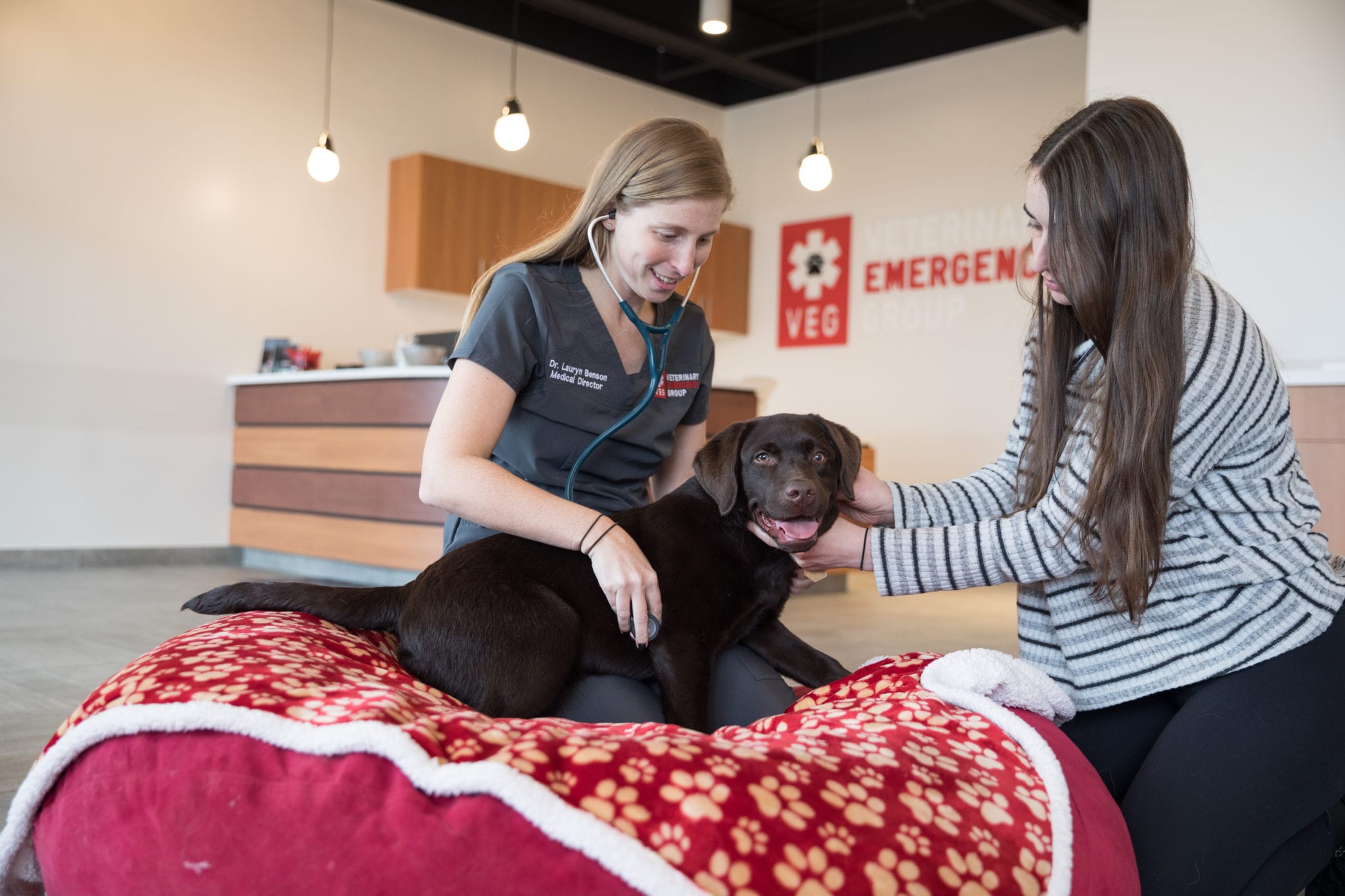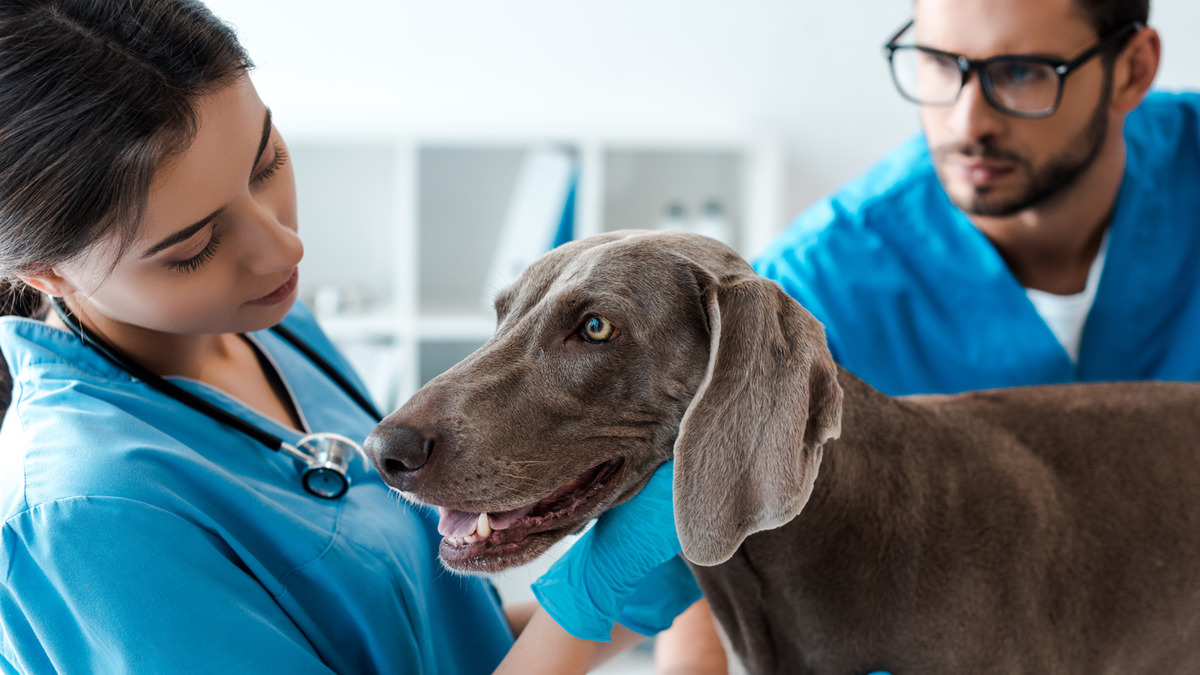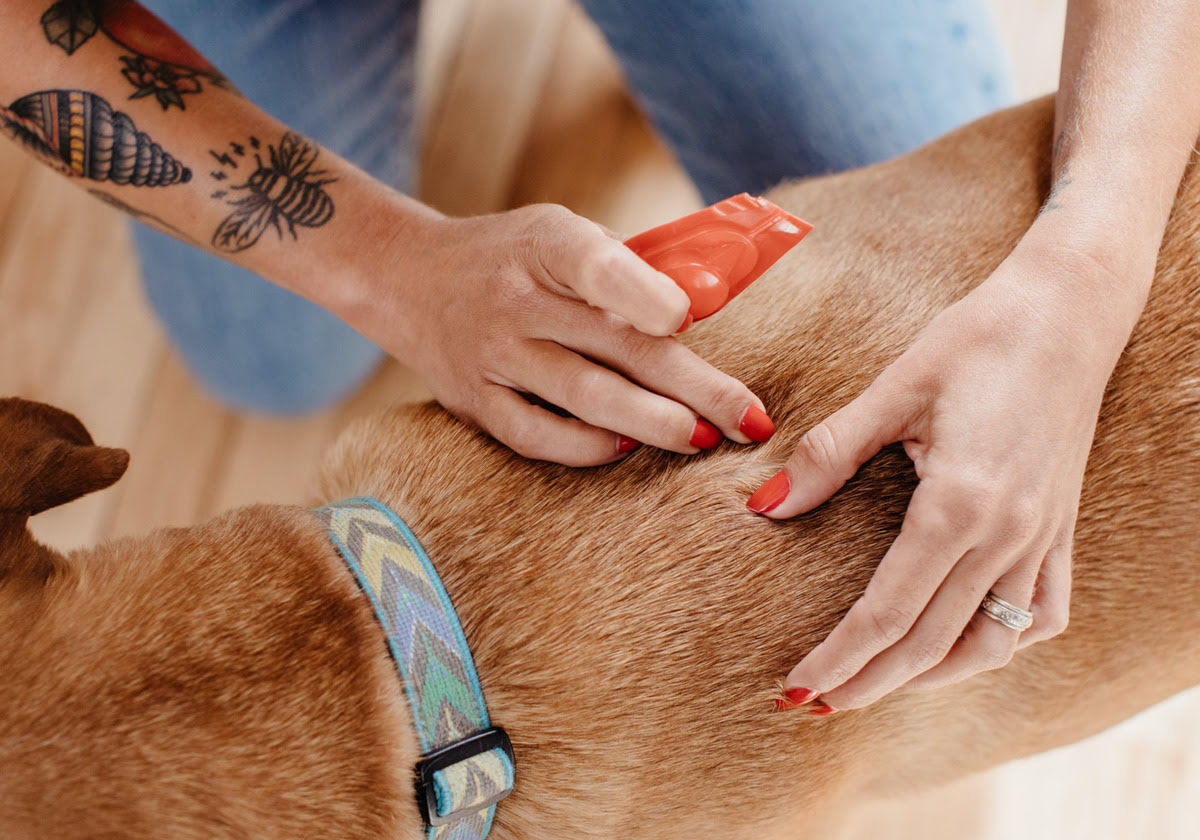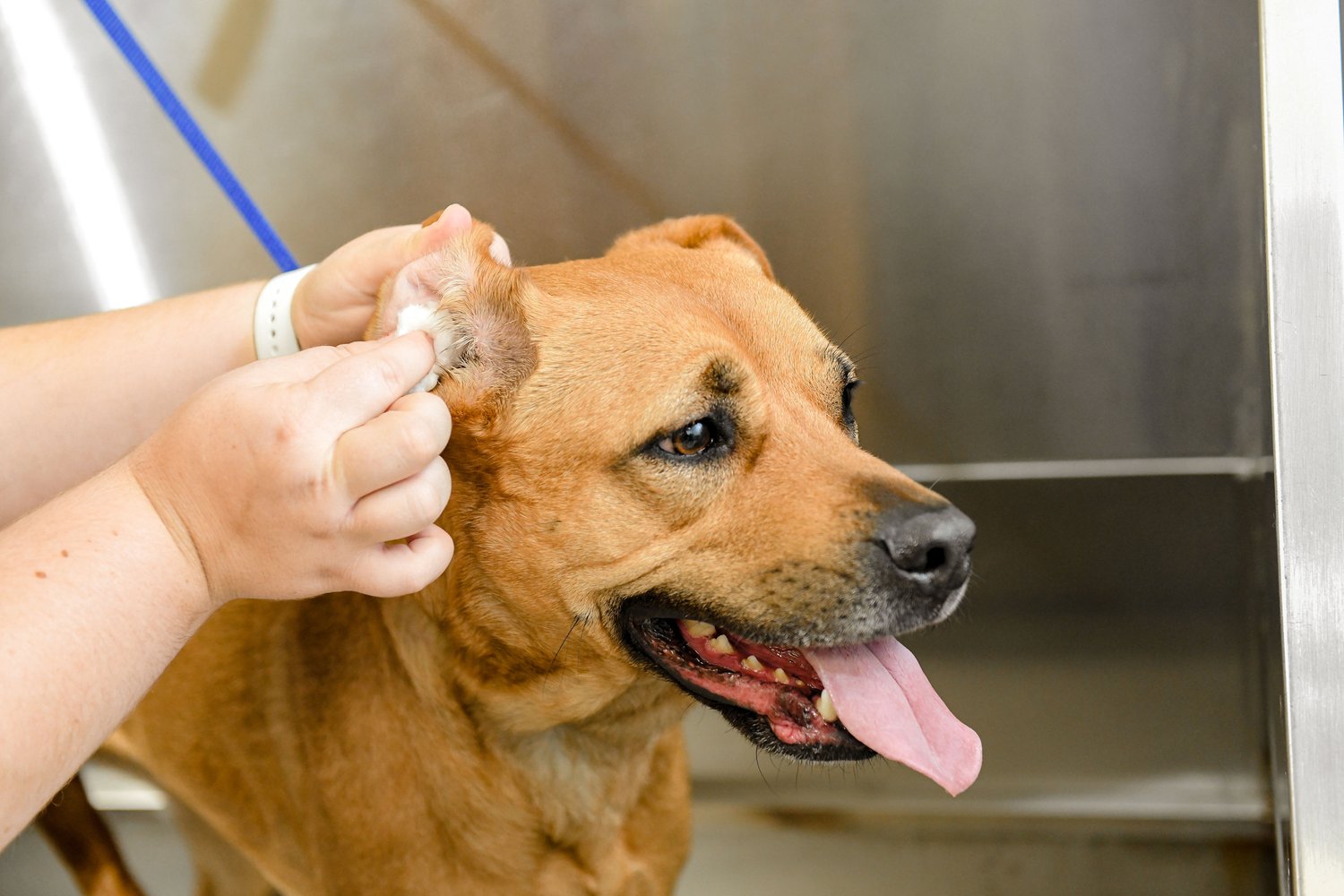Home>Health & Wellness>Common Health Issues>How To Treat An Allergic Reaction For A Dog


Common Health Issues
How To Treat An Allergic Reaction For A Dog
Modified: February 21, 2024
Learn how to treat common health issues like allergic reactions in dogs. Discover effective remedies and tips to keep your furry friend healthy and happy.
(Many of the links in this article redirect to a specific reviewed product. Your purchase of these products through affiliate links helps to generate commission for Pawsomeoldies.com, at no extra cost. Learn more)
Table of Contents
Understanding Allergic Reactions in Dogs
Allergic reactions in dogs occur when their immune system overreacts to a substance that is typically harmless. These substances, known as allergens, can trigger a range of symptoms, from mild discomfort to severe distress. It's important for dog owners to understand the nature of allergic reactions in order to provide appropriate care for their furry companions.
Dogs can develop allergies to a variety of environmental factors, including pollen, mold, dust mites, and certain foods. Additionally, they can be sensitive to flea bites, certain medications, and even some materials such as wool or synthetic fibers. When a dog comes into contact with an allergen, their immune system may perceive it as a threat, leading to the release of histamines and other chemicals that cause the symptoms of an allergic reaction.
It's worth noting that allergic reactions can manifest in different ways in dogs. Some may experience skin-related symptoms such as itching, redness, and rashes, while others may exhibit respiratory issues like sneezing, coughing, or wheezing. In more severe cases, dogs can suffer from gastrointestinal problems, including vomiting and diarrhea, as a result of an allergic reaction.
Understanding the triggers and symptoms of allergic reactions in dogs is crucial for providing timely and effective treatment. By recognizing the signs of an allergic reaction and identifying potential allergens, dog owners can take proactive measures to alleviate their pet's discomfort and prevent future occurrences.
Identifying Common Allergens for Dogs
Dogs, like humans, can develop allergies to a wide range of substances. Identifying common allergens for dogs is essential for managing and preventing allergic reactions in our furry friends. Here are some of the most prevalent allergens that can affect dogs:
Pollen
Pollen from grasses, trees, and weeds can trigger allergic reactions in dogs, particularly during the spring and fall seasons. When dogs come into contact with pollen, either through inhalation or skin contact, they may exhibit symptoms such as itching, sneezing, and watery eyes.
Mold
Mold spores are another common allergen for dogs. Mold can thrive in damp environments, and dogs may be exposed to it indoors or outdoors. Allergic reactions to mold can manifest as skin irritation, respiratory issues, and general discomfort.
Dust Mites
These microscopic creatures are a common allergen for both humans and dogs. Dust mites thrive in household dust, bedding, and upholstery. Dogs with dust mite allergies may experience itching, hair loss, and skin infections.
Certain Foods
Just like humans, dogs can be allergic to certain foods, with common culprits including beef, chicken, dairy, and grains. Food allergies in dogs can lead to skin problems, digestive issues, and ear infections. Identifying and eliminating the specific food allergen is crucial for managing this type of allergy.
Flea Saliva
Flea bites can cause allergic reactions in dogs, not to the flea itself, but to the saliva they inject into the dog's skin while feeding. Dogs with flea allergies may develop intense itching, redness, and skin inflammation at the site of the bite.
Medications
Some dogs may be allergic to certain medications, such as antibiotics or pain relievers. Allergic reactions to medications can range from mild skin irritation to severe anaphylaxis, a potentially life-threatening condition.
Household Chemicals
Cleaning products, detergents, and other household chemicals can also act as allergens for dogs. Contact with these substances can lead to skin irritation, respiratory distress, and other allergic symptoms.
By being aware of these common allergens, dog owners can take proactive measures to minimize their pet's exposure and reduce the risk of allergic reactions. Additionally, consulting with a veterinarian can help in identifying specific allergens through testing, allowing for targeted management and treatment of allergies in dogs.
Signs and Symptoms of an Allergic Reaction in Dogs
Allergic reactions in dogs can manifest in various ways, and recognizing the signs and symptoms is crucial for timely intervention and treatment. While the specific symptoms can vary depending on the allergen and the individual dog, there are several common indicators of an allergic reaction to watch out for.
Skin Irritation
One of the most prevalent signs of an allergic reaction in dogs is skin irritation. This can present as itching, redness, and the development of rashes or hives. Dogs may excessively scratch, lick, or chew at affected areas, leading to hair loss, open sores, and secondary skin infections. Persistent scratching and skin discomfort are clear indications of a potential allergic reaction.
Respiratory Distress
Allergens such as pollen, mold, and dust mites can trigger respiratory symptoms in dogs. This may include sneezing, coughing, wheezing, and nasal discharge. Dogs experiencing respiratory distress due to allergies may exhibit labored breathing, increased respiratory rate, and overall discomfort when breathing. These symptoms can be particularly pronounced during specific seasons or in certain environments where allergen exposure is heightened.
Gastrointestinal Issues
In some cases, dogs may display allergic reactions through gastrointestinal symptoms. This can include vomiting, diarrhea, and general digestive upset. Allergies to certain foods or medications can lead to these symptoms, causing discomfort and distress for the affected dog. Persistent or severe gastrointestinal issues should prompt a thorough evaluation to determine if an allergic reaction is the underlying cause.
Read more: How To Treat A Dog Allergic To Dust Mites
Ear Infections
Allergic reactions in dogs can also manifest as ear infections. Dogs with allergies may experience ear inflammation, excessive scratching at the ears, and a buildup of wax or discharge. Ear infections related to allergies can be recurrent and may require targeted treatment to alleviate discomfort and prevent future occurrences.
Behavioral Changes
It's important to note that allergic reactions can also impact a dog's behavior. Discomfort and distress from allergies may lead to changes in behavior, such as restlessness, irritability, or a reluctance to engage in normal activities. Dogs may seek out secluded areas or exhibit signs of agitation as a result of their allergic symptoms.
Eye Irritation
Allergens can cause eye irritation in dogs, leading to symptoms such as redness, excessive tearing, and rubbing or pawing at the eyes. Dogs with allergic reactions may exhibit sensitivity to light and discomfort related to their eye symptoms.
By being attentive to these signs and symptoms, dog owners can promptly seek veterinary care and implement appropriate measures to alleviate their pet's discomfort. Understanding the diverse ways in which allergic reactions can manifest in dogs is essential for providing comprehensive care and ensuring the well-being of our canine companions.
Steps to Treat an Allergic Reaction in Dogs
Upon observing signs of an allergic reaction in a dog, prompt and appropriate treatment is essential to alleviate discomfort and prevent the escalation of symptoms. Here are the crucial steps to effectively treat an allergic reaction in dogs:
-
Identify the Allergen: If the specific allergen triggering the reaction is known, take immediate measures to minimize the dog's exposure to it. For instance, if the allergic reaction is due to pollen, consider keeping the dog indoors during peak pollen times and wiping their paws and fur after outdoor activities.
-
Consult a Veterinarian: Seeking professional veterinary guidance is paramount when dealing with allergic reactions in dogs. A veterinarian can conduct a thorough examination to confirm the allergic nature of the symptoms and recommend an appropriate treatment plan.
-
Administer Medication: Depending on the severity of the allergic reaction, the veterinarian may prescribe medications to alleviate symptoms. This can include antihistamines to reduce itching and inflammation, corticosteroids to address more severe skin and respiratory symptoms, or other medications tailored to the specific allergic response.
-
Topical Treatments: For dogs experiencing skin irritation as part of the allergic reaction, topical treatments such as medicated shampoos, soothing sprays, or prescribed ointments can provide relief and aid in the healing of affected skin areas.
-
Dietary Adjustments: In cases where food allergies are suspected, the veterinarian may recommend dietary changes to eliminate the offending allergen. This can involve transitioning the dog to a hypoallergenic diet or eliminating specific ingredients known to trigger allergic responses.
-
Environmental Modifications: Making adjustments to the dog's living environment can help manage allergic reactions. This may include using air purifiers to reduce indoor allergens, regularly washing bedding and toys, and implementing flea control measures to minimize the risk of flea saliva-triggered allergies.
-
Follow-Up Care: After initiating treatment, it's important to closely monitor the dog's response and attend any follow-up appointments recommended by the veterinarian. This allows for the assessment of treatment effectiveness and the adjustment of the care plan if necessary.
-
Preventive Measures: Once the allergic reaction is under control, focus on preventive measures to minimize future occurrences. This can involve ongoing allergen avoidance, regular grooming to remove potential allergens from the dog's coat, and adhering to any dietary or environmental recommendations provided by the veterinarian.
By diligently following these steps and collaborating with a veterinarian, dog owners can effectively manage and treat allergic reactions in their beloved pets, ensuring their well-being and comfort.
Preventing Future Allergic Reactions in Dogs
Preventing future allergic reactions in dogs is a proactive and essential aspect of responsible pet care. By implementing preventive measures, dog owners can significantly reduce the risk of their furry companions experiencing distressing allergic symptoms. Here are effective strategies to minimize the occurrence of allergic reactions in dogs:
Allergen Avoidance
Identifying and minimizing the dog's exposure to known allergens is fundamental in preventing allergic reactions. For instance, if a dog is allergic to pollen, limiting outdoor activities during high pollen count periods and regularly cleaning their paws and coat after outdoor excursions can help reduce allergen contact. Similarly, for dogs with food allergies, diligently adhering to a vet-recommended hypoallergenic diet and avoiding specific allergenic ingredients is crucial.
Regular Grooming
Regular grooming practices, including bathing and brushing, play a pivotal role in reducing the accumulation of potential allergens on a dog's coat and skin. Bathing with hypoallergenic shampoos can help alleviate skin irritation and remove allergens, while routine brushing aids in the removal of pollen, dust, and other environmental allergens that may cling to the dog's fur.
Environmental Control
Creating an allergen-friendly living environment for dogs can significantly contribute to preventing allergic reactions. This can involve using air purifiers to reduce indoor airborne allergens, regularly washing bedding and toys to minimize dust mites and other allergens, and maintaining a clean and well-ventilated living space to minimize mold growth and indoor pollutants.
Flea Control
Implementing effective flea control measures is essential, as flea saliva is a common allergen for dogs. Utilizing veterinarian-recommended flea prevention products and regularly inspecting the dog for signs of fleas can help minimize the risk of flea-induced allergic reactions.
Veterinary Guidance
Regular veterinary check-ups and consultations are invaluable in preventing allergic reactions in dogs. Veterinarians can provide guidance on allergen avoidance, recommend appropriate flea control products, and conduct allergy testing to identify specific triggers. Additionally, they can offer insights into dietary adjustments and environmental modifications tailored to the dog's individual needs.
Ongoing Monitoring
Consistent monitoring of the dog's health and behavior allows for the early detection of potential allergic symptoms. By promptly addressing any signs of discomfort or unusual reactions, dog owners can take proactive measures to prevent the escalation of allergic responses and seek timely veterinary care if necessary.
By integrating these preventive strategies into their pet care routine, dog owners can create a supportive and allergen-minimized environment for their canine companions, promoting their overall well-being and reducing the likelihood of allergic reactions.










